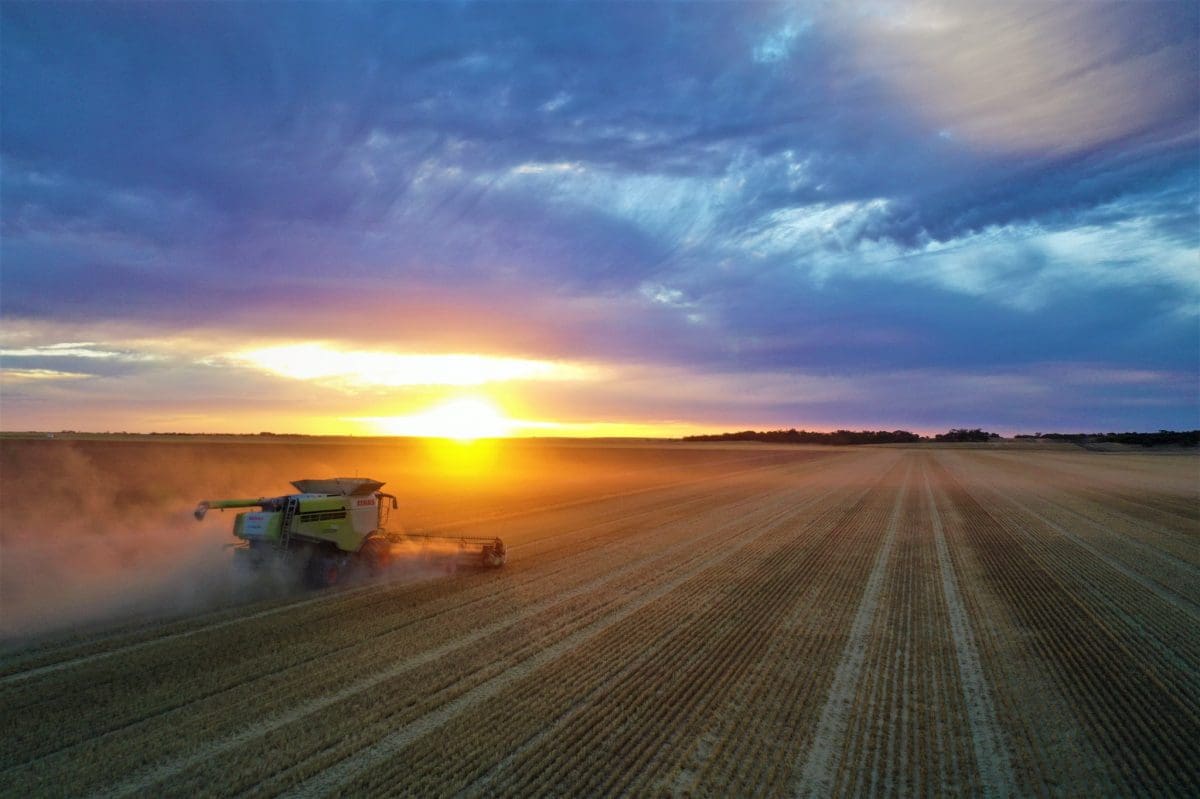
Harvest in Victoria’s northern Mallee is nearing completion. Photo: Jack Flavel, North West Ag Services
EXTREME heat in the north and some showers in the south have kept grower selling to a minimum this week in a market where the spread between wheat and barley has narrowed.
In the south, showers in Victoria, South Australia and central New South Wales have slowed harvest and deliveries for a day or two, but their effect on the market has been minimal as most consumers are now covered into early January.
This means any execution difficulties are being sorted out between growers, brokers and transport operators, and will be short lived.
| This week | Last week | Change | |
| Barley Downs Jan | $273 | $270 | Up |
| Barley Melbourne Jan | $243 | $242 | Up |
| Wheat Downs Jan | $304 | $308 | Down |
| Wheat Melbourne Jan | $292 | $305 | Down |
| Sorghum Downs Mar-Apr | $370 | $325 | Up |
Table 1: Indicative delivered grain prices in AUD per tonne.
South speeds up
Deliveries into sites in southern NSW are now accelerating, as is out-turn by rail as major accumulation sites start to fill.
GeoCommodities broker principal Brad Knight said Victoria’s focus was fixed for now on handling rather than trading the crop, with domestic users now comfortable with their coverage in the near term.
“Consumers have got ownership on paper, and execution is the problem, but it’s a sideshow to the major one which is how to handle this crop.”
Trade sources report growers in south-eastern Australia are working on harvesting the crop quickly and storing as much of it on farm as possible, with more showers on the forecast into next week.
On road transport, Victorian operators are busy carting grain from farm to port for prompt shipments.
Heat hurts sorghum
Sorghum-growing areas of southern Queensland and northern NSW have had a a run of days over 40 degrees Celsius.
This has clipped yield potential from some crops, particularly those that were planted early and are now flowering.
Bringing respite to some sorghum crops was patchy rain which fell in southern Queensland in the 24 hours to 9am today, with 92 millimetres at Brigalow on the Western Downs the highest officially registered fall.
However, registrations were mostly 10-20mm, and many locations received nothing.
A heatwave this early in summer is very unusual, and has made growers cautious about advancing their sales in case drought demand re-emerges next year.
A focus on logistics has also stymied grower interest in selling as activity post harvest switches to outloading grain sold earlier.
For locations north of Moree, Downs feedlots remain the favoured location for barley, while bulk handlers, feed and flour millers are getting most of the wheat.
Transport tight in south
A large volume of NSW wheat is being moved by rail to the ports of Newcastle and Port Kembla to fill early shipping slots, and wheat and barley is moving to Victorian ports.
The export program for both grains is already well under way.
Delta Ag broker Tom Vanzella said growers in the northern market appeared to be comfortable with their level of selling as concerns build around the La Niña not showing up and conditions turning dry.
“It looks like their cashflow requirements have been met for this year from the canola and multigrade wheat sales they had on before harvest, and the soft seller will move south with the harvest.”
He said growers seemed particularly unwilling to let go of barley at current values.
“They’ve got bunkers down, and the weather is the front-and-centre concern now.”
Barley and benchmark wheat prices have softened since harvest, but now appear to have stabilised on the back of domestic coverage past the New Year, and export business.
“Barley is looking like an autumn sale for growers now.”
Grain Central: Get our free cropping news straight to your inbox – Click here



HAVE YOUR SAY